Western Canada’s hiking trails offer breathtaking diversity—from glacier-fed lakes to alpine peaks—inviting adventurers of all levels to explore its wild beauty. This guide highlights top routes, seasonal tips, and essential gear for an unforgettable trekking experience.
Western Canada is home to some of the most breathtaking hiking trails in the world. From rugged coastal paths to alpine routes that weave through the towering Rocky Mountains, there is something for every outdoor enthusiast. The legendary West Coast Trail boasts dramatic cliffs and untouched beaches, while the picturesque Lake O’Hara region offers crystal-clear lakes and jagged peaks.
Berg Lake Trail, nestled deep within the Canadian Rockies, features awe-inspiring glaciers and dramatic mountain vistas. Whether you’re an experienced trekker seeking a demanding adventure or a beginner looking for a scenic day hike, Western Canada’s trails promise unparalleled beauty, thrilling challenges, and an escape into pristine wilderness.
Every trail presents unique characteristics, from tranquil meadows teeming with wildlife to steep, adrenaline-pumping ascents. Hiking here is more than just an outdoor activity; it’s a journey through some of the planet’s most striking landscapes. With trails suitable for all skill levels, hikers can immerse themselves in diverse ecosystems, witness stunning sunrises over mountain peaks, and experience the magic of untouched nature.
Prepare for an unforgettable adventure as you explore the majestic landscapes of Western Canada.
Top hiking trails
Western Canada’s extensive trail network offers breathtaking views and diverse terrain. Here are some of the best trails in Banff and Yoho National Parks, two of the region’s premier hiking destinations.
Banff National Park
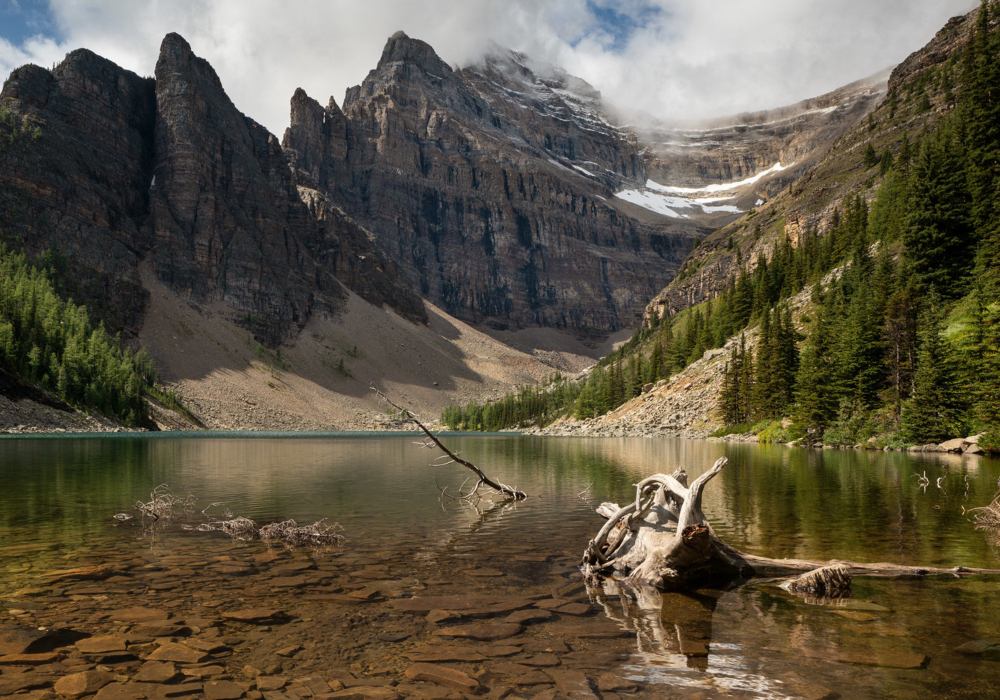 Panoramic image of Lake Agnes, a quiet place surrounded by the Rocky Mountains close to Lake Louise, Banff National Park, Alberta, Canada
Panoramic image of Lake Agnes, a quiet place surrounded by the Rocky Mountains close to Lake Louise, Banff National Park, Alberta, Canada
Banff National Park is a treasure trove for hikers. It offers a variety of trails, each with its own unique charm. The Lake Louise area is famous for its stunning turquoise waters and scenic vistas.
- Plain of Six Glaciers Trail: This trail is perfect for those who love glaciers and alpine scenery. The trail is about 14 kilometres round trip and offers breathtaking views.
- Johnston Canyon: A must-visit for waterfall lovers. The trail features two stunning waterfalls and is relatively easy, making it great for families.
- Sulphur Mountain: Hike to the top for panoramic views of Banff and the surrounding mountains. The trail is 5.5 kilometres one way and moderately challenging.
For those interested in a more rugged adventure, the Sawback Range offers challenging trails and incredible wildlife viewing opportunities. Here’s a quick overview:
| Trail Name | Difficulty | Distance | Highlights |
|---|---|---|---|
| Healy Pass | Moderate | 18 km round trip | Alpine meadows, wildflowers |
| Paradise Valley | Hard | 20 km round trip | Majestic peaks, wildlife |
Yoho National Park
Often overshadowed by Banff, Yoho National Park boasts some of the most breathtaking hikes in Canada. Known for its towering waterfalls and emerald lakes, Yoho offers remarkable trails that rival any in the Rockies.
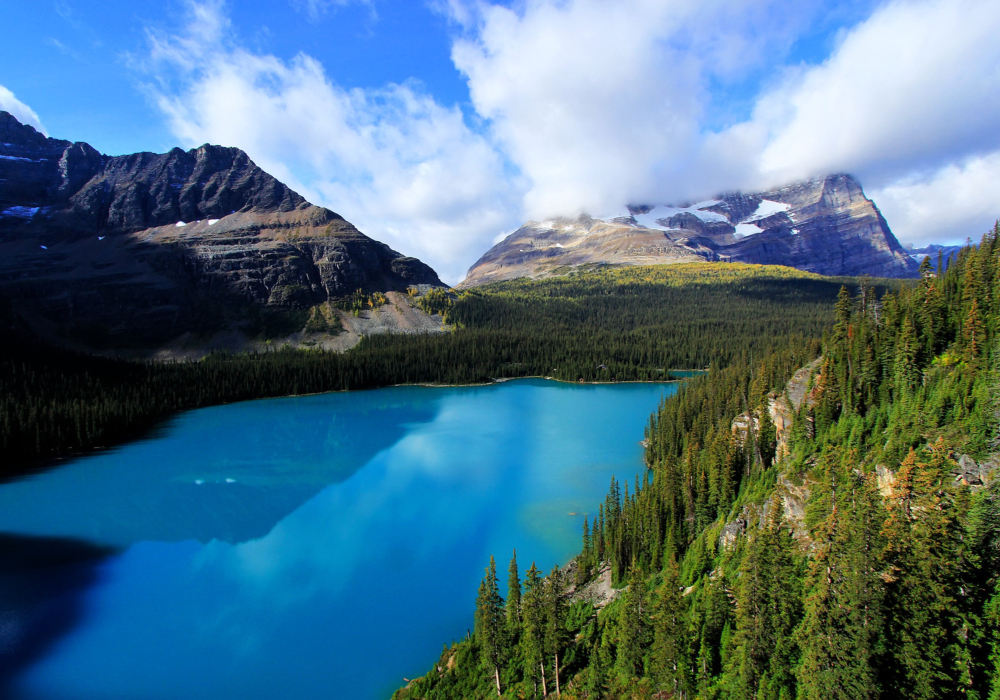 Lake O'Hara, Yoho National Park, British Columbia, Canada
Lake O'Hara, Yoho National Park, British Columbia, Canada
Top trails in Yoho:
- Iceline Trail: This trail is a gem for those who love ice and rock. It’s a 21-kilometer loop that takes you past glaciers and stunning alpine views.
- Emerald Lake Loop: A 5.2-kilometer easy trail around the vibrant Emerald Lake. The trail is perfect for a leisurely hike with family.
- Takakkaw Falls: This short trail (1.5 kilometres) leads to one of the tallest waterfalls in Canada. The falls are a spectacular sight, especially in the summer.
For adventurers seeking a more challenging experience, the Yoho Valley offers some of the most rewarding hikes. Here’s what you can expect:
| Trail Name | Difficulty | Distance | Highlights |
|---|---|---|---|
| Twin Falls | Moderate | 15 km round trip | Waterfalls, scenic views |
| Little Yoho Valley | Hard | 18 km round trip | Glaciers, alpine meadows |
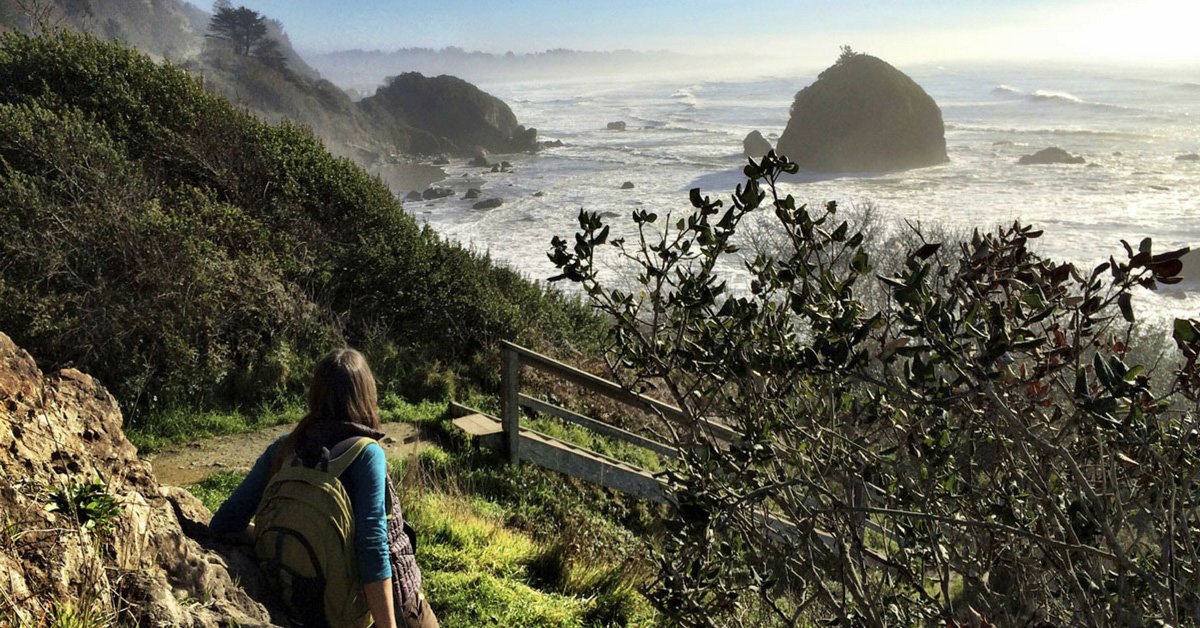
Scenic views
Whether you’re gazing at soaring peaks, tranquil lakes, or cascading waterfalls, these hikes are visual feasts.
Mountain vistas
Hiking through the Canadian Rockies offers spectacular mountain views at every turn. Some of the best trails for panoramic vistas include:
-
Sulphur Mountain (Banff National Park): Overlooks the Bow Valley and surrounding peaks.
-
Skyline Trail (Jasper National Park): One of the best ridge walks in the country, providing uninterrupted mountain scenery.
-
High Note Trail (Whistler): Features striking views of Cheakamus Lake and the Tantalus Range.
Lakes and waterfalls
Western Canada’s lakes and waterfalls add to the region’s natural beauty. The turquoise waters and powerful cascades make these trails particularly memorable.
 View from above: Lake Louise Banff National Park in the Canadian Rocky Mountains.
View from above: Lake Louise Banff National Park in the Canadian Rocky Mountains.
Top spots for lakes and waterfalls:
- Lake Louise: Known for its turquoise waters, Lake Louise is a gem. Hike the Plain of Six Glaciers trail for an unforgettable view.
- Emerald Lake: Located in Yoho National Park, its greenish-blue waters are mesmerizing. The Emerald Lake Loop is an easy, scenic trail.
- Helmcken Falls: This waterfall is a sight to behold in Wells Gray Provincial Park. The Helmcken Falls Rim Trail offers the best vantage points.
These hikes are perfect for those who love the sound of water. The best times to visit are during the spring and summer months, when the water levels are at their peak, making the falls even more spectacular.
Wildlife encounters
Hiking in Western Canada often includes encounters with incredible wildlife. The region is home to bears, elk, eagles, and a diverse array of bird species.
Bears and elk
Both animals are often spotted along popular trails. Bears, including grizzlies and black bears, are common in the Rockies. They are usually shy but can be curious.
Here are some tips to stay safe:
- Carry bear spray.
- Hike in groups.
- Make noise to avoid surprising a bear.
- Store food properly.
Elk are also frequent visitors to these trails. They are generally peaceful but can be aggressive, especially during mating season. Elk are often seen in Jasper and Banff National Parks. When hiking, keep a safe distance from these large animals.
Here's a quick safety table:
| Animal | Behaviour | Safety tips |
|---|---|---|
| Bear | Shy but curious | Carry bear spray, make noise |
| Elk | Peaceful but can be aggressive | Keep a safe distance |
Birdwatching opportunities
Western Canada is a paradise for birdwatchers. The region's diverse habitats attract many bird species; birdwatchers and hikers can enjoy spotting eagles, owls, and songbirds.
Some of the best places for birdwatching include:
- Stanley Park, Vancouver
- Elk Island National Park, Alberta
- Waterton Lakes National Park, Alberta
While hiking, bring binoculars and a bird guide to help you identify different species. Eagles are often seen soaring above mountains, while owls can be spotted in wooded areas. Songbirds are abundant near lakes and rivers.
Here are some common birds to look for:
- Bald Eagle
- Great Horned Owl
- Yellow Warbler
- Red-winged Blackbird
Whether you are a seasoned birdwatcher or a beginner, Western Canada's trails offer endless opportunities to enjoy the avian world.
Hiking difficulty levels
From easy strolls to challenging climbs, there's something for everyone. Understanding the hiking difficulty levels is essential for choosing the right trail. Whether you're a beginner or an experienced hiker, knowing what to expect can make your adventure more enjoyable and safe.
Easy trails
If you're new to hiking or prefer a more relaxed experience, easy trails are the perfect choice. These trails are typically shorter and have gentle slopes. They offer beautiful views without too much exertion.
Here are some of the best easy trails in Western Canada:
- Johnston Canyon Trail: Located in Banff National Park, this trail is famous for its waterfalls. It's a 2.7 km walk to the Lower Falls, making it ideal for families.
- Lake Agnes Tea House: This trail in Lake Louise is 3.4 km long. The reward at the end is a charming tea house by the lake.
- Stanley Park Seawall: This 9 km path in Vancouver offers stunning city and ocean views. It's flat and perfect for walking or cycling.
Challenging routes
If you crave a more intense adventure, challenging routes will test your stamina and skills. These trails often feature steep climbs, rough terrain, and longer distances, making them perfect for experienced hikers seeking a thrill.
Some of the top challenging hikes in Western Canada include:
- West Coast Trail: This 75 km trail on Vancouver Island takes about 5-7 days to complete. It features a rugged coastline, ladders, and cable cars.
- Assiniboine Pass: This 27 km trail offers stunning mountain views in Mount Assiniboine Provincial Park. It's a multi-day hike with significant elevation gain.
- Skyline Trail: In Jasper National Park, this 44 km trail takes you above the treeline. It provides panoramic views of the Rockies and takes 2-3 days to complete.
Best time to hike
The best time to hike Western Canadian trails can vary based on the season. Each season offers its own unique beauty and challenges. Understanding the best hiking time can help you plan an unforgettable adventure in Western Canada.
Spring adventures
Spring is an ideal time to explore the trails in Western Canada. The snow begins to melt, making way for blooming wildflowers and lush greenery. Trails are less crowded, offering a peaceful hiking experience.
Here are some of the highlights of hiking in spring:
- Fewer crowds and more solitude.
- Trails are lined with colourful wildflowers.
- Wildlife is more active, offering opportunities for sightings.
Some of the best trails to hike in spring include:
| Trail Name | Location | Difficulty |
|---|---|---|
| Garibaldi Lake Trail | British Columbia | Moderate |
| Grassi Lakes Trail | Alberta | Easy |
| Joffre Lakes Trail | British Columbia | Moderate |
Spring offers a refreshing start to the hiking season. The weather is mild, and the scenery is breathtaking. However, always check trail conditions before setting out, as some higher-elevation trails may still have snow.
Autumn colours
Autumn in Western Canada is a magical time to hike. The forests transform into a vibrant tapestry of reds, oranges, and yellows, and cooler temperatures make for comfortable hiking conditions.
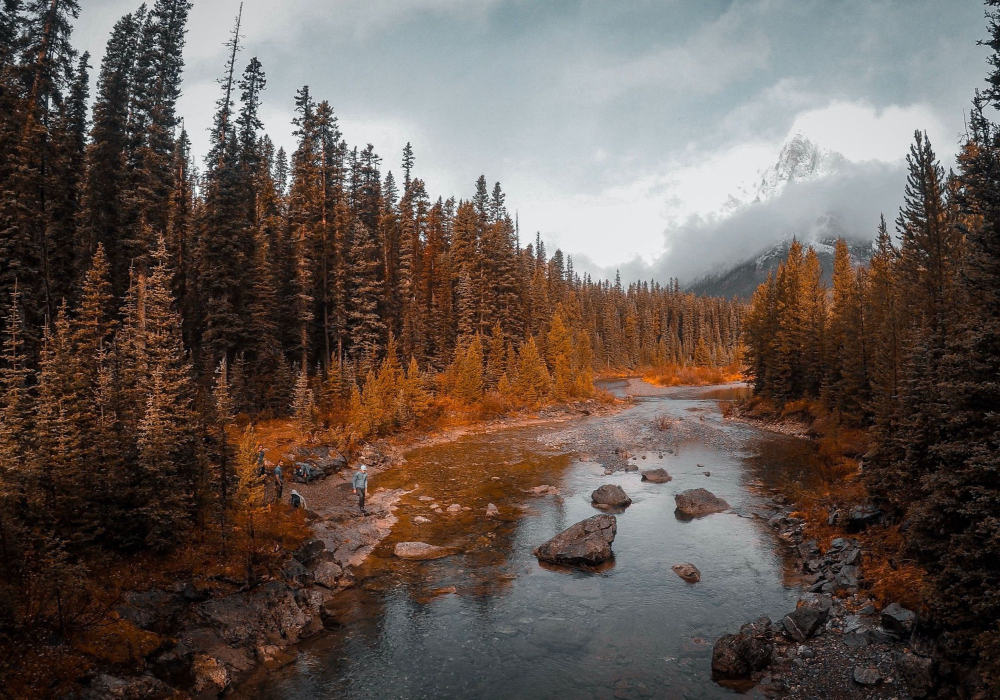
Highlights of hiking in autumn include:
- The stunning fall foliage and colourful landscapes.
- Cooler temperatures are perfect for longer hikes.
- Less chance of encountering bugs and mosquitoes.
Some top trails to experience autumn colours are:
| Trail Name | Location | Difficulty |
|---|---|---|
| Lake O'Hara Alpine Circuit | British Columbia | Challenging |
| Larch Valley Trail | Alberta | Moderate |
| Plain of Six Glaciers Trail | Alberta | Moderate |
Autumn hikes provide a perfect blend of beauty and tranquillity. The trails are quieter, and the scenery is unmatched. Always be prepared for changing weather conditions and shorter daylight hours.
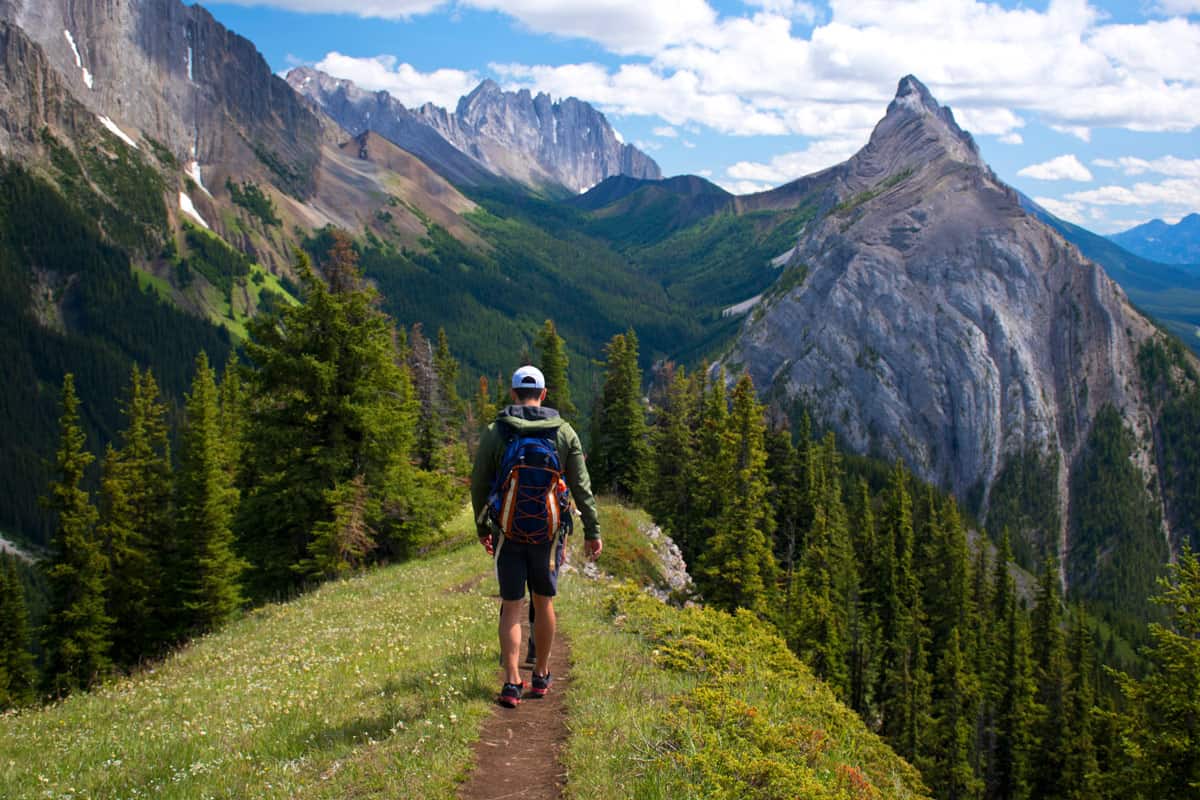
Essential gear
Western Canada offers some of the most breathtaking hikes in the world. Proper equipment ensures your safety and comfort, so having the right gear to enjoy these adventures is crucial. Below, we will explore essential gear for hiking in this beautiful region.
Footwear recommendations
Choosing the right footwear is essential for a successful hike. The terrain can be rugged, so good hiking boots are key. Here are some tips:
- Waterproof Boots: Ensure your boots are waterproof. This keeps your feet dry in wet conditions.
- Comfort: Look for boots with ample cushioning. This helps reduce foot fatigue on long hikes.
- Traction: A good grip is essential. Check for deep treads to navigate slippery surfaces.
- Breathability: Your feet need to breathe. Choose boots with mesh panels for ventilation.
Here are some recommended brands:
| Brand | Model | Features |
|---|---|---|
| Salomon | Quest 4D 3 GTX | Waterproof, cushioned, excellent traction |
| Merrell | Moab 2 | Breathable, comfortable, good grip |
| Columbia | Newton Ridge Plus | Durable, waterproof, lightweight |
Backpacks and supplies
Carrying the right backpack and supplies is crucial for your hike. A well-packed backpack ensures you have everything you need. Here's what to consider:
- Size: Choose a backpack that fits your hike's duration. A 20-30 litre pack is sufficient for day hikes. For multi-day hikes, consider 50 litres or more.
- Comfort: Look for padded shoulder straps and a hip belt. This distributes weight evenly and reduces strain.
- Hydration: Ensure your backpack has a compartment for a hydration bladder. Staying hydrated is essential.
- Accessibility: Choose a pack with multiple compartments. This helps you organize and access your gear quickly.
Essential supplies to pack include:
- Water: Carry at least 2 litres per person for a day hike.
- Food: Pack high-energy snacks like nuts and granola bars.
- First aid kit: Include bandages, antiseptic wipes, and pain relievers.
- Navigation: Carry a map, compass, or GPS device.
- Clothing: Pack extra layers, including a rain jacket.
- Tools: Bring a multi-tool and a flashlight.
Recommended backpacks include:
| Brand | Model | Features |
|---|---|---|
| Osprey | Daylite Plus | Lightweight, hydration compatible, multiple compartments |
| Deuter | Futura Vario | Comfortable, large capacity, good ventilation |
| Gregory | Paragon 48 | Durable, spacious, adjustable fit |
Safety tips
Safety is crucial. Here are essential safety tips for enjoying these beautiful landscapes without any worries.
Wildlife precautions
As mentioned earlier, encountering wildlife is common on Western Canada hikes. Knowing how to handle these situations is vital. Follow these additional tips to stay safe:
- Make noise: Talk, clap, or sing while hiking to avoid surprising animals.
- Carry bear spray: Always have bear spray accessible and know how to use it.
- Travel in groups: Hiking in groups is safer and deters wildlife encounters.
- Store food properly: Use bear-proof containers and keep food away from your campsite.
- Stay on marked trails: This reduces the chance of running into wildlife.
Wildlife encounters can vary depending on the season and location. Here's a table to help understand potential wildlife and the best precautions:
| Animal | Precaution |
|---|---|
| Bear | Carry bear spray, make noise, and avoid hiking at dawn/dusk. |
| Cougar | Travel in groups, keep children close and avoid hiking alone. |
| Moose | Give them space, do not approach, and stay calm if encountered. |
Weather preparedness
Weather in Western Canada can be unpredictable. Preparing for sudden changes is crucial for a safe hike. Follow these tips:
- Check the forecast: Always check the weather before heading out.
- Dress in layers: Wear moisture-wicking base layers, insulating mid-layers, and waterproof outer layers.
- Carry extra clothing: Pack extra socks, gloves, and a hat.
- Bring a map and compass: Weather can change visibility, making navigation tools essential.
- Stay hydrated: Cold weather can cause dehydration, so drink plenty of water.
A well-prepared hiker is a safe hiker.
Final thoughts
Exploring the best hikes in Western Canada offers unforgettable experiences. Majestic landscapes and diverse trails await every adventurer. Whether you're a seasoned hiker or a beginner, there's something for everyone. So, pack your gear and start planning your next hiking trip.
Western Canada offers an unparalleled hiking experience, where every trail leads to breathtaking landscapes, pristine wilderness, and moments of pure adventure. From Banff National Park's towering peaks to Lake Louise's mesmerizing turquoise waters, the region is a haven for nature lovers.
Whether you choose a leisurely lakeside stroll or an intense backcountry trek, the beauty of Western Canada’s landscapes will leave a lasting impression. Proper preparation, from selecting the right trail to carrying essential gear, ensures a safe and rewarding experience.
Beyond the trails, hiking in Western Canada fosters a deep connection with nature and a respect for the environment. The diverse wildlife, spectacular vistas, and ever-changing scenery make each hike unique. Whether you’re embarking on a multi-day trek through the Rockies or taking a leisurely walk around Emerald Lake, the adventure is just beginning.
Lace up your boots, embrace the wild, and set out to explore one of the world's most breathtaking hiking destinations.

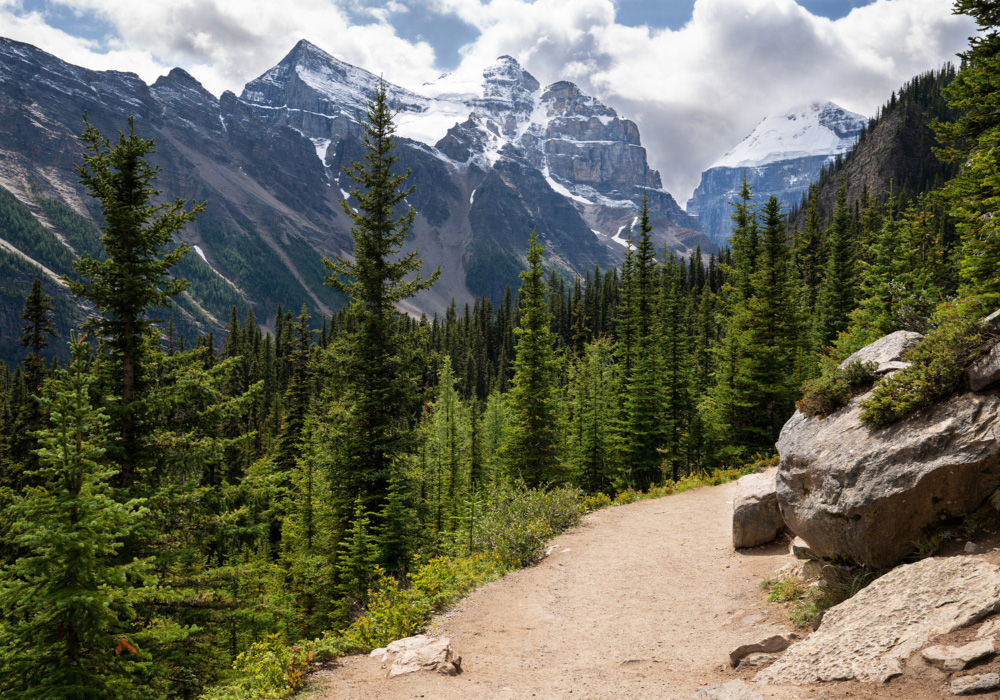

Comments powered by CComment